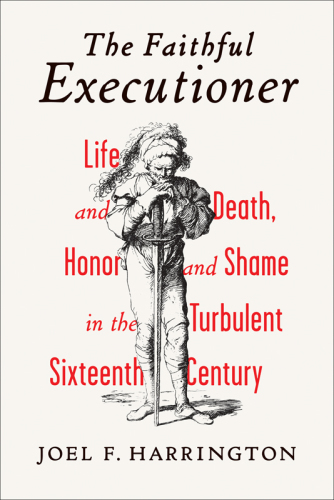
The Faithful Executioner
Life and Death, Honor and Shame in the Turbulent Sixteenth Century
کتاب های مرتبط
- اطلاعات
- نقد و بررسی
- دیدگاه کاربران
نقد و بررسی

December 17, 2012
In Harrington’s gruesome and enlightening latest (after The Unwanted Child), the career of German executioner Frantz Schmidt is used to paint a ghastly portrait of life in the “long sixteenth century.” The book’s backbone is Schmidt’s remarkable journal, a laconic catalogue of 45 years of executions and reflections. Medieval class distinctions, held in place by heredity and Christian values, are dissected as the executioner attempts to expunge the “dishonorable” stigma from his family name (his father trained him in the “odious craft”). An anomaly for his time, the pious, sober executioner meticulously recorded the deeds of those he dispatched. From his retellings of various crimes—which run the gamut from slander to patricide—a sense of the medieval moral system emerges, as do Schmidt’s own personal ethics and beliefs: contra the status quo, Schmidt, a proponent of “a more modern concept of individual identity,” refused to “conflate social status and reputation.” Juxtaposed against the moral underpinnings of barbaric justice in 16th-century Europe, Schmidt’s journey to reconcile his profession with his faith and personal philosophies makes for a fascinating read. 39 illus., 2 maps. Agent: Rafe Sagalyn, Sagalyn Literary Agency.

January 1, 2013
A sympathetic revelation of the surprisingly poignant inner life of a pious Lutheran executioner. A historian of early modern German history at Vanderbilt, Harrington (The Unwanted Child: The Fate of Foundlings, Orphans, and Juvenile Criminals in Early Modern Germany, 2009) has delved at length into a personal journal kept over a remarkable 45-year career by the executioner of Nuremberg, Frantz Schmidt; the journal reveals that he was keeping it for very public reasons. Schmidt began the journal at age 19 in 1573, when he was just an apprentice to his father, the executioner of Bamberg. After a stint as a journeyman, Schmidt attained the status of master by age 24 and procured a plum job in the thriving industry town of Nuremberg, where he plied his trade with exemplary dignity for the next 40 years, recording some 394 deaths and countless acts of flogging and torture. Some of the entries offer more detail than others, but overall, Schmidt shows he was a willing executioner, even a passionate one, in terms of his righteous sense of administering due punishment in the face of senseless, random injustice. He was also an abstemious, disciplined professional who brought rigorous standards to a trade notorious for its violence and instability. Moreover, Harrington reveals some subtle yet telling details in the journal, attesting to the scholar's expertise in German and his doggedness in going back to Schmidt's original manuscript rather than relying on later, edited versions. Despite its authorial diffidence, "an evolving self-identity became ever more pronounced," as Schmidt shows his obsession with social standing and a sense of righting his own familial injustice. What he wanted was what everyone strove for: a better life for his children. A whole teeming world of Reformation Germany comes alive in this well-handled historical reconstruction. An accessible, even inviting portrait of the professional killer, despite the gruesome detail.
COPYRIGHT(2013) Kirkus Reviews, ALL RIGHTS RESERVED.

























دیدگاه کاربران